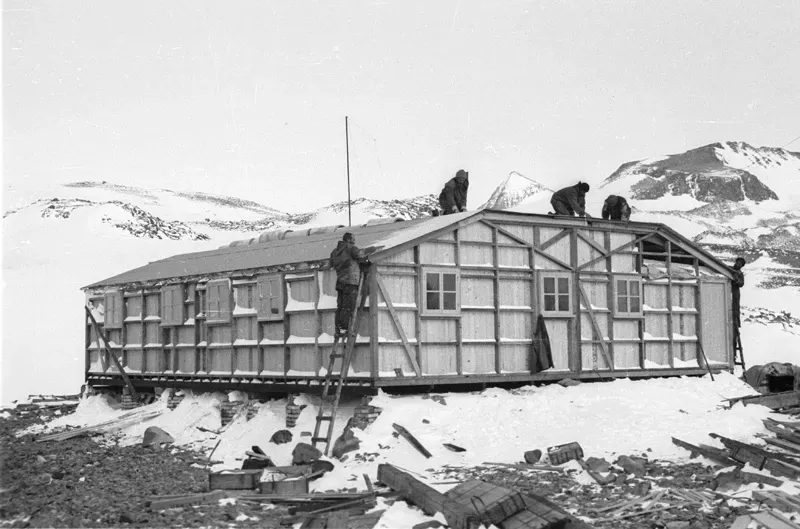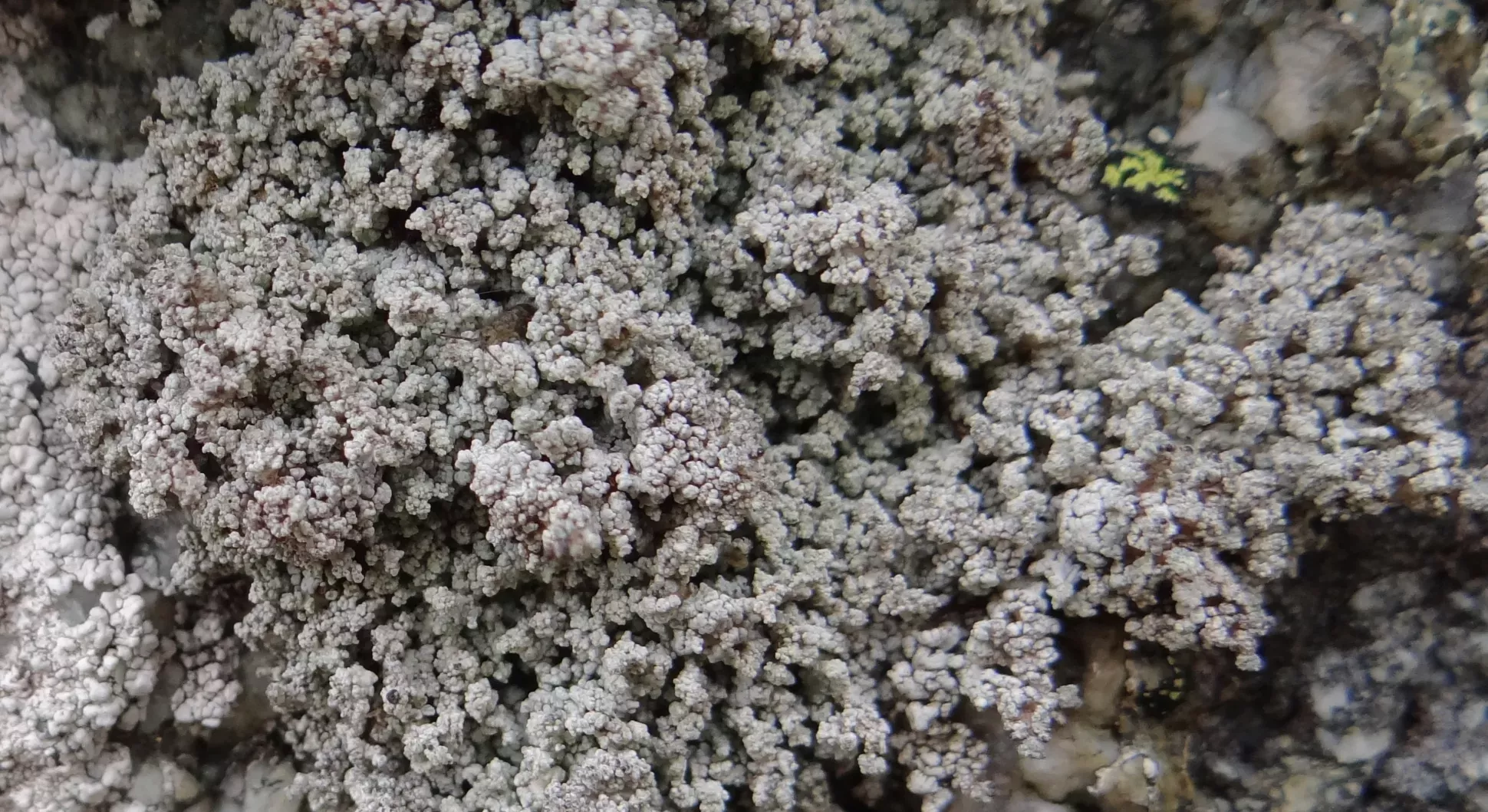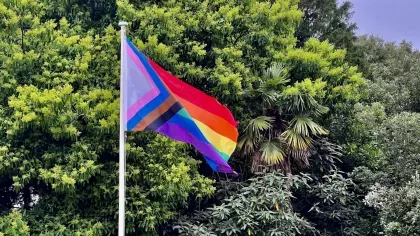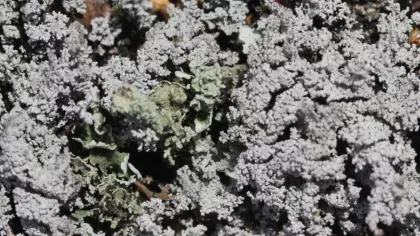9 October 2023
Five LGBTQ+ pioneers of the natural world
Meet a community of LGBTQ+ scientists and artists who brought their own vibrant perspectives to the world of plants and fungi.

The natural world is a constant source of fascination, curiosity and inspiration for scientists, writers and artists.
Among these celebrants of nature, there are many people who are widely recognised to be closely linked with the LGBTQ+ community.
Meet some of these LGBTQ+ artists and scientists who shared their love of plants, fungi and nature with the world.
Gluck
In the early part of the 20th century, artist Gluck was famous for two things: beautiful botanical paintings and subverting traditional gender norms of the day.
Gluck studied art in north London, then moved to Lamorna in Cornwall to join an art colony. It was here Gluck began wearing trousers and ties, having short hair, and smoking a pipe: all considered traditionally masculine.
This behaviour was considered deeply confused by some, including Gluck’s own mother, who described it as 'a kink in her brain'.
Gluck was also notable for openly being a lesbian at a time when this was widely considered to be unacceptable. This included relationships with floral designer Constance Spry, married artist Nesta Obermer and journalist Edith Shackleton Heald.
Gluck’s early work was a mix of portraits and florals, including calla lilies (Zantedeschia) and angel’s trumpet (Brugmansia).
After breaking up with Obermer, Gluck took an extended hiatus from painting, only returning in the 1970s after having established new standards for high quality oil paints.


Brigitte Baptiste
In a 2018 TEDx talk, Colombian landscape ecologist Brigitte Baptiste made a powerful statement: 'There is nothing more queer than nature.'
After completing a master’s degree in tropical conservation, and a doctorate in environmental science, Baptiste worked in both non-profit organisations and academia to understand more about how biodiversity is affected by change in land use, like farming or deforestation.
She is one of the founders of the Alexander von Humboldt Biological Resources Research Institute, a governmental organisation that works to assess the biodiversity of Colombia, to better utilise and conserve it.
Baptiste served as the director of the institute for nearly a decade, between 2011 and 2019, and was recently appointed chancellor of Universidad Ean in Colombia.

Alongside her passion for sustainability and conservation, Baptiste’s identity as a transgender woman has helped inform her approach to nature.
In a 2023 interview, Baptiste stated 'I clearly identify my queerness as a condition that has prompted me to ask different questions and engage with many different people.'
Trying to understand the evolutionary dynamics of the natural world is a challenge at the best of times, but can be made even harder by ingrained sexuality and gender-related prejudice.
By bringing in a diversity of viewpoints, it helps us all gain a greater understanding of the variety of evolution in nature.
As Brigitte Baptiste herself said in a 2022 interview, 'The queer view of biodiversity helps us assign new words to the transformations instead of reducing ourselves to canonical parameters or stereotyped descriptions.'

Derek Jarman
Throughout the 1970s and 80s, Derek Jarman was an outspoken gay rights and AIDS activist, which he channelled into his uncompromising films and visual artwork.
Famous for films such as the cult punk satire Jubilee (1978) and historical drama Carvaggio (1986), Jarman’s work was notable for exploring gay sexuality, as well as experimental narrative structures.
Outside of filmmaking, Jarman is known for the incredible garden he created at his home, Prospect Cottage, in Dungeness.

Jarman bought Prospect Cottage in 1987, a year after being diagnosed with HIV. Having always been fascinated with flowers, he first planted around 30 rose bushes in the shingle.
But the harsh sea-salt rich area caused them to rapidly wither. Instead, Jarman turned to planting native species that thrived in the harsh environment, like sea kale (Crambe maritima) and hound’s tongue (Cynoglossum officinale).
Derek Jarman died of AIDS-related illness in 1994. But his garden still lives on today, as a memory to his passion.
Speaking on his garden, Jarman said 'I’ve had more fun from this place than I’ve had with anything else in my life. I should have been a gardener.'


Elke Mackenzie
Lover of lichens Elke Mackenzie travelled to the furthest corners of the Earth to discover new species. But when she publicly embraced her identity as a trans woman, her career was cut short.
Elke started her journey when she became an assistant keeper in lichen collections of the Natural History Museum, London. It was here she became fascinated by the little-understood lichens of Antarctica.
In 1943, in the midst of the Second World War, Elke joined Operation Tabarin, a top-secret mission sending scientists to Antarctic territories. During the three years she spent in Antarctica, Elke collected hundreds of lichen specimens, many new to science.

In 1953, Elke became the director of the lichen collection at Harvard University, a highly respected role within her field. But through the 1960s, Elke struggled with worsening mental health.
After separating from her wife, she consulted with a specialist in New York, where she was eventually diagnosed with what we would today recognise as gender dysphoria.
In 1971, Elke legally transitioned from male to female.
According to Elke’s friend Professor Laurence Senelick, Harvard University was ‘appalled’ with her decision and forced her into early retirement at the age of sixty.
Almost all of Elke’s work was published under her birth name. But in one of her final publications, Elke acknowledged herself with a thanks to ‘Miss Elke Mackenzie for technical and bibliographic assistance in the preparation of this paper’.

Vita Sackville-West
While she’s primarily remembered as a writer, Vita Sackville-West should also be celebrated for her creativity as a garden designer.
Sackville-West’s literary works include All Passion’s Spent and The Edwardians, along with numerous collections of poetry.
In 1930, she purchased Sissinghurst Castle in Kent with her husband and spent three decades transforming the garden from an area of 'squalor and slovenly disorder' to one of the most popular gardens in Britain.
Over her time working on the gardens, Sackville-West cultivated two hundred varieties of rose, and developed a garden broken into separate 'rooms', including the White Garden, Rose Garden and Cottage Garden.


Vita Sackville-West is also well known for her relationships throughout her life with women, describing herself as a ‘sapphist’. Most famous is her love affair with fellow writer, Virginia Woolf, author of the short story Kew Gardens.
In 1926, Sackville-West famously wrote ‘I am reduced to a thing that wants Virginia’, epitomising their intensely passionate relationship that lasted between 1925 and 1935.
Sackville-West had relationships with a number of other women, including childhood friend Violet Keppel, and radio producer Hilda Matheson.
In a memoir of her relationships, unpublished in her lifetime, Sackville-West wrote about how she wished for a 'spirit of candor' across the world that would allow for tolerance of bisexual people like herself, while simultaneously referring to herself as a 'pariah'.
It’s an indicator of how far we have come, but also a reminder of how far we still have to go.

LBGTQ+ people have always been a part of art, science and history. While in the past they haven't always been properly remembered or recognised, we're regularly rediscovering their stories today.
Sometimes, telling these stories can be challenging. Social norms, language and forms of identity have evolved dramatically over the last few hundred years. But it's crucial that we continue to celebrate these stories, to show the truth: that a diversity of people have always been involved in exploring the diversity of nature.



